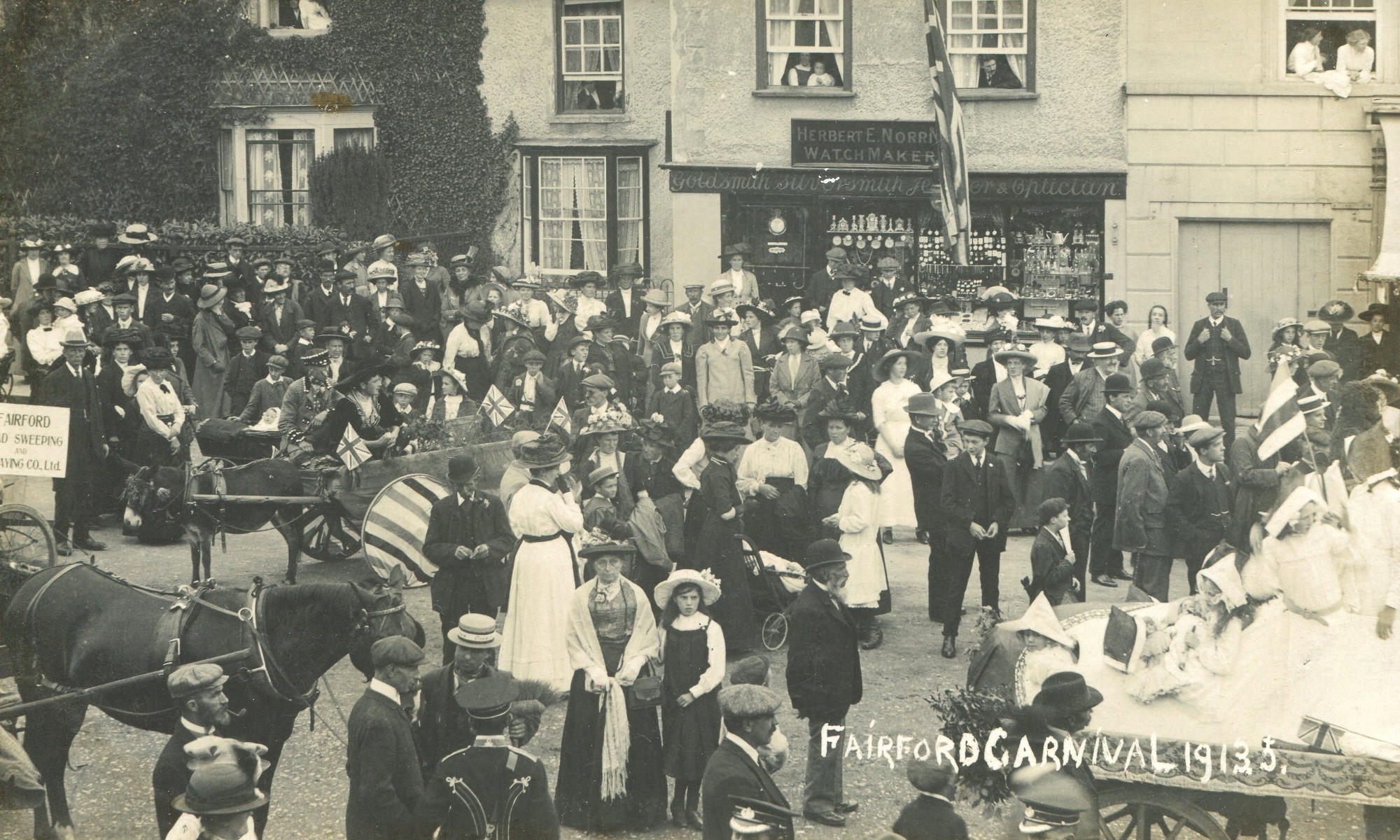Horcott Quarry – Oxford Archaeology Open Day (15/3/08)
A detailed report of the excavations at Horcott was published by Oxford Archaeology in 2017 titled ‘Horcott Quarry, Fairford and Arkell’s Land, Kempsford’ and can be viewed in the FHS Archive Room in the Community Centre.
On 15 March 2008, FHS members made a second visit to Horcott Quarry to view progress during Oxford Archaeology’s Open Day. Iron Age, Roman and Saxon evidence suggests that the site was occupied from 400 BC to 800 AD. In 2006 FHS members had been able to see the excavation of a large Roman Cemetery but the 2008 tour of the site allowed us to see the imprint of Iron Age, Roman and Saxon settlement on the environment as well as some of the artefacts that had been found.
Sand and gravel has been quarried at Horcott since the 1960s. The gravel seam is about 3 metres deep and mixed with clay. The nature of the soil and sub-soil and agricultural activity from the end of occupation and the beginning of quarrying means that there is very little of any ancient settlement remaining.
Iron Age
There is evidence of 30-40 early Iron Age roundhouses at the Horcott Quarry site. It is thought that approximately 20 existed at the same time which suggests a community of about 100 people. The remains of these roundhouses consist of a circle of post holes. 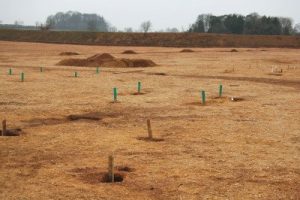 Evidence of fence posts and enclosures also exist. Within the settlement were the vestiges of a large number of four-post structures. These are thought to have been small grain stores as Spelt and Emmer wheat seeds where found in the post holes. Analysis of the Iron Age evidence continues.
Evidence of fence posts and enclosures also exist. Within the settlement were the vestiges of a large number of four-post structures. These are thought to have been small grain stores as Spelt and Emmer wheat seeds where found in the post holes. Analysis of the Iron Age evidence continues.
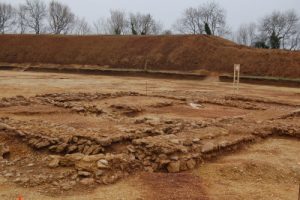 Roman:
Roman:
In addition to one of the largest Roman rural cemeteries in the Upper Thames Valley having been found at Horcott, there is evidence of a Roman farming settlement focused around a small masonry building. This ‘proto-villa’ is thought to predate the cemetery and masonry found in some of the graves is thought to have come from the building suggesting that it was in ruins when the cemetery was in use. The building consisted of a large central room and two wings, with a structure that suggested the back of the house had been extended.
Saxon:
The Saxon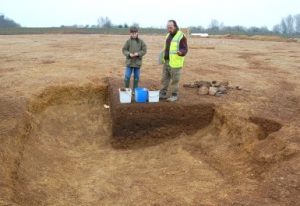 settlement at Horcott is one of the largest discovered in the region. There were two types of buildings; rectangular post-built halls and sunken-featured buildings or Grubenhausen (‘Grub Huts’). The sunken-featured buildings, consisting of a building raised on four large posts at each corner of a rectangular hole in the ground, may have been workshops or simple dwellings. The rectangular halls were thought to be houses.
settlement at Horcott is one of the largest discovered in the region. There were two types of buildings; rectangular post-built halls and sunken-featured buildings or Grubenhausen (‘Grub Huts’). The sunken-featured buildings, consisting of a building raised on four large posts at each corner of a rectangular hole in the ground, may have been workshops or simple dwellings. The rectangular halls were thought to be houses.
Simple handmade pottery, animal bone and clay spindle whorls for weaving associated with the Saxon period have been found within these buildings. The pattern of the buildings suggests that the settlement moved away from the nearby watercourse upslope over time. The remains of two parallel ditches indicate the site of a track alongside the settlement. A series of pits in amongst the building remains are thought to have been wells.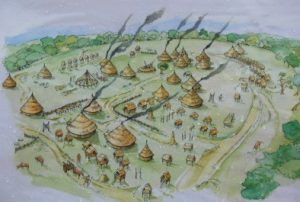
The Horcott Iron Age settlement is thought to have started as a small community of arable and pastoral farmers who were also producing pottery, metalwork and textiles. The site was originally on a spur of slightly higher land bounded by a watercourse the remains of which can still be traced.
During the Roman period the inhabitants of Horcott were thought to be a prosperous farmer and his family.
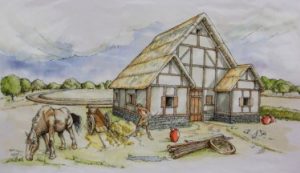
Artist’s impressions courtesy of Oxford Archaeology.
